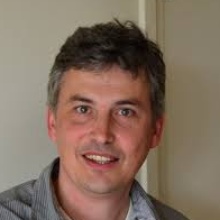We are pleased to announce that our SFB 1313 Mercator Fellow and co-investigator Sorin Iuliu Pop, professor from the Hasselt University (Belgium), will give the SFB 1313 "Pretty Porous Science Lecture" #43. His talk will be on "Homogenization of a reaction-diffusion model involving free boundaries at the micro scale".
Date: Thursday, 13 July 2023
Time: 5:00 pm CET
Speaker: Prof. Dr. Sorin Iuliu Pop, Hasselt University (Belgium)
Lecture title: "Homogenization of a reaction-diffusion model involving free boundaries at the micro scale"
Place: Multi Media Lab (MML), U1.003, Pfaffenwaldring 61, 70569 Stuttgart, Campus Vaihingen. If you are interested in participating in the lecture, please contact melanie.lipp@iws.uni-stuttgart.de
Abstract
Evolving microstructures appear in many mathematical models. Prominent examples in this sense are mineral dissolution and precipitation, or biofilm growth in porous media. At the micro-scale, such models are extremely complex: on one hand, the micro-structure is itself complex, and, next to this, this micro-structure is also evolving, being a model unknown itself. At the macro-scale, one preferably considers a macro-scale model, describing the averaged behaviour of the system, but accounting for the micro-structural evolution. We consider here a mathematical model for dissolution and precipitation in a porous medium. In the initial state, the microscopic geometry is a periodically perforated domain, each perforation being a spherical solid grain. A small parameter ϵ is characterizing both the distance between two neighboring grains, and the radii of the grains. For each grain, the radius depends on the unknown (the solute concentration) at its surface. Therefore, the radii of the grains change in time and are model unknowns, so the model involves free boundaries at the microscopic scale. In the first step, we transform the evolving micro domain to a fixed, periodic domain. Using the Rothe-method, we prove the existence of a weak solution and obtain a priori estimates that are uniform with respect to ϵ. Finally, letting ϵ → 0, we derive a macroscopic model, the solution of which approximates the micro-scale solution. For this, we use the method of two-scale convergence, and obtain strong compactness results enabling us to pass to the limit in the nonlinear terms. This is a joint work with Markus Gahn (Heidelberg) and Maria Neuss-Radu (Erlangen)


